How to Pre Plan Comic Panels for Instagram Drawings
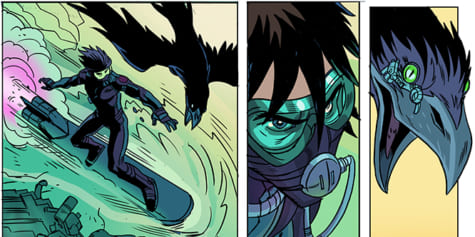
Confidently guide readers through your comic with this collection of techniques by comic artist Steve Ellis on comic frames/panels, gutters, & page flow.
Dynamic Frames in Comics!
As a comic artist, I accept come across many unlike ways to tell a story. A good story needs pacing, flow, and residue. We achieve this through grapheme motion, grapheme acting, and how and where we cull to begin or end scenes and sequences; but one of the overlooked tools of storytelling is the panel or frame, and it'southward silent partner, the gutter.
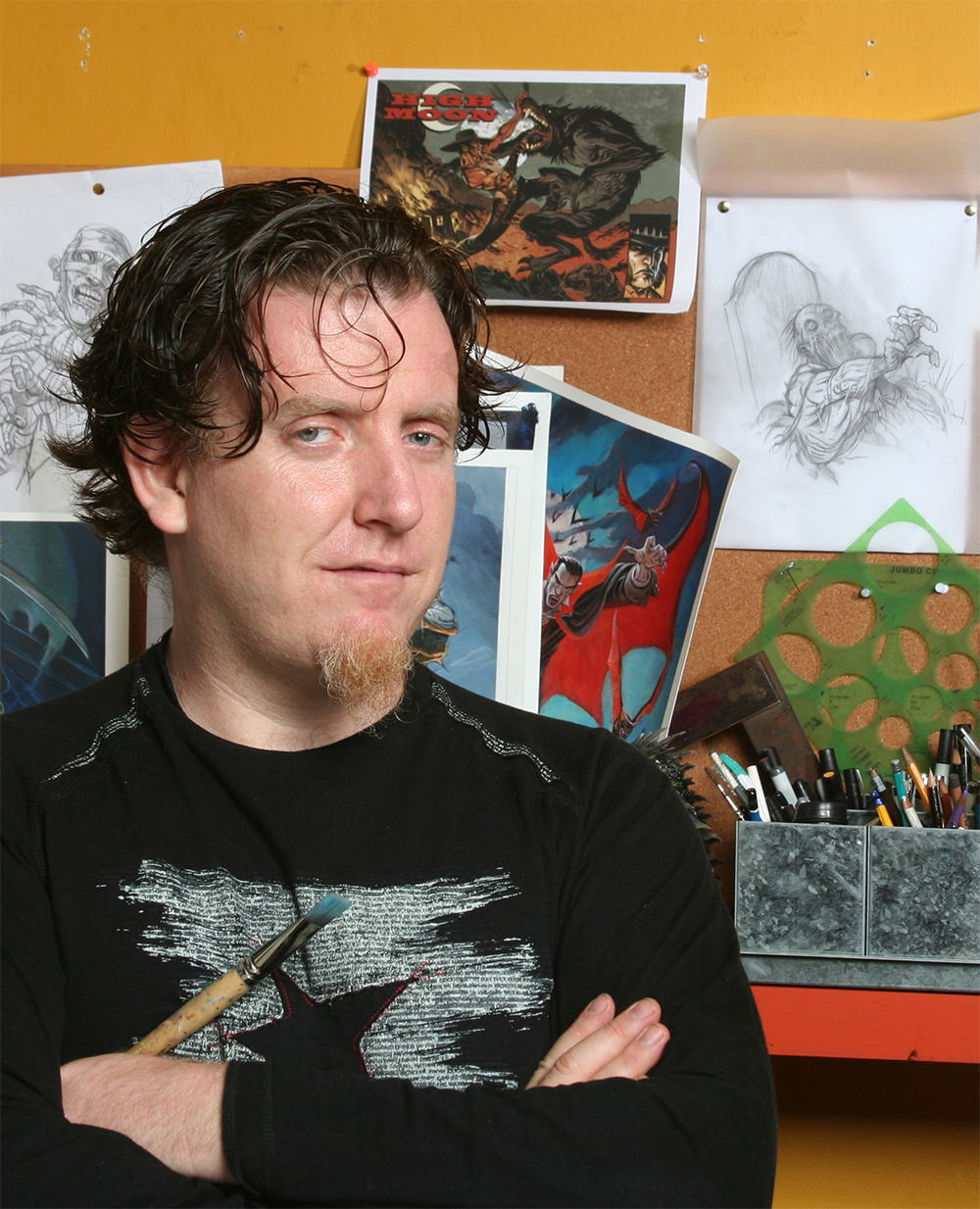
The panel is the border that wraps effectually a single moment in a comic. Its job is to contain an illustration that puts forth an idea. The contents of each console should be a complete idea, but sometimes the idea you need for a panel can fill a paragraph or exist every bit short as a unmarried word. Beyond the contents of a console, it is a storytelling tool past itself. By containing that thought, it is separating that idea from the one previous and the one before. Information technology's literally a wall that says to the reader "here is a consummate idea, read information technology and move onto the next." When I lay out a page, I will think almost:
- What are the start and endpoints of the page?
- What needs to happen between those two points to tell the progress from beginning to end?
- How many steps volition tell that progression best and what needs to be included in each step?
- Translate those steps to panels/ frames.
- How do I wait the reader to motility from one panel to the next?
- How does the last panel atomic number 82 to the side by side page?
I begin with thumbnails that move me through the story of a page. I will ofttimes layout each panel equally an individual so things that will after be insets or large panels will all be the same size. This allows me to see which ones should be bigger or smaller or insets, where I tin can get rid of the edge, and determine what kinds of frames I want.
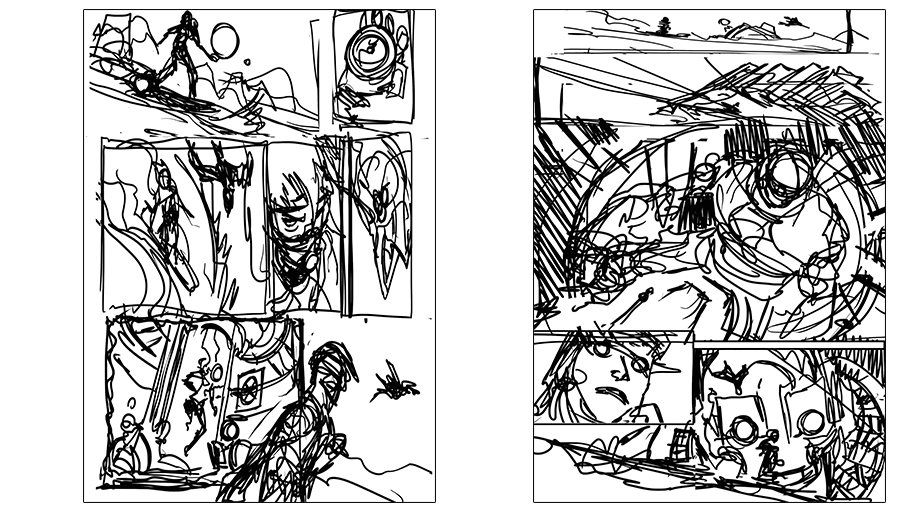
I make certain that the panels lead the reader from left to right and downwardly to mimic the usual reading pattern of a western-style comic volume. All the action within the panels leads you across the page or down to the next tier of panels.
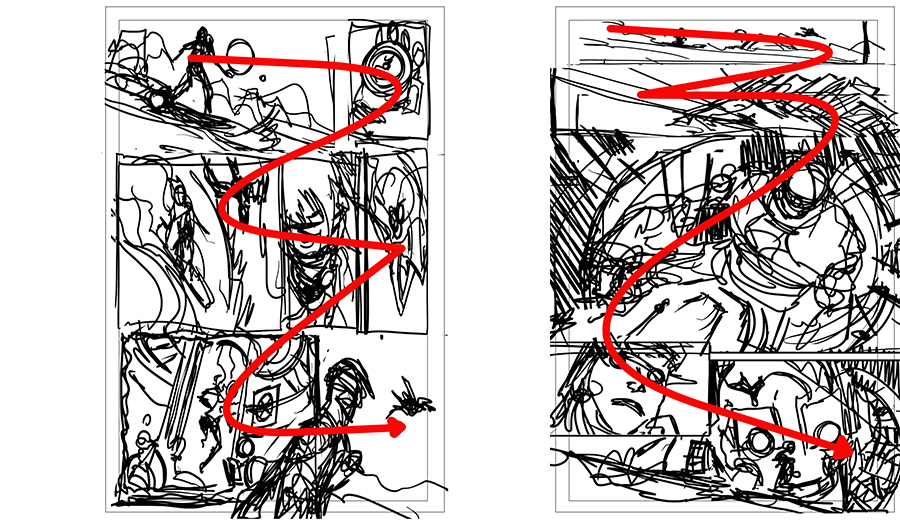
The terminal page should read something similar this:
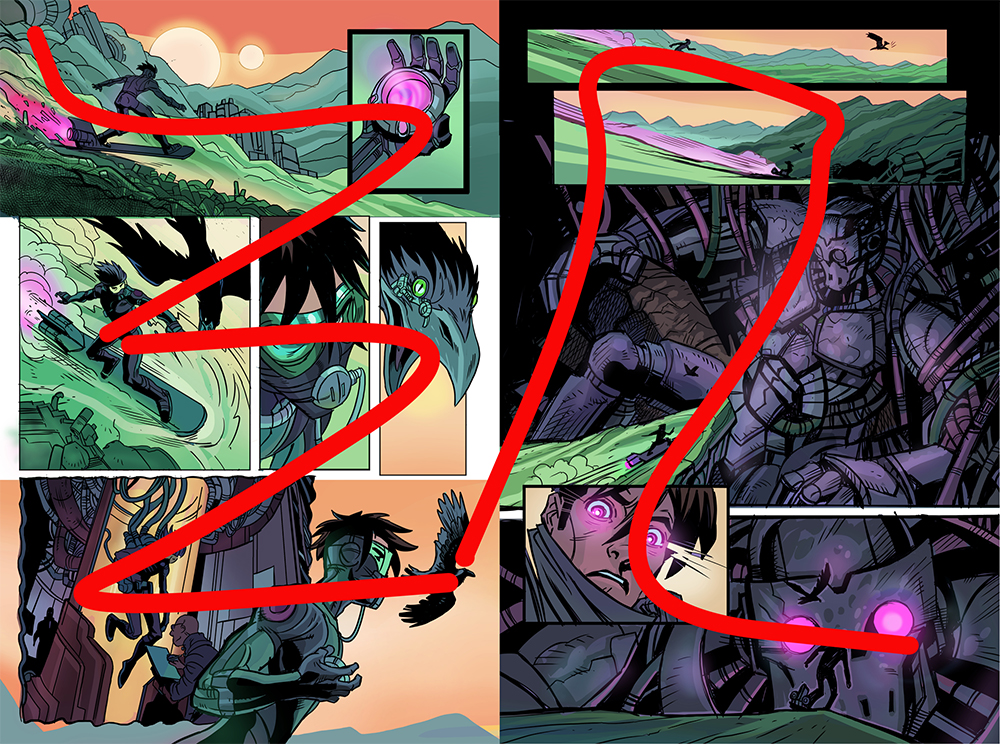
Leading the reader through the folio line through folio image. Double folio spread.
Leading the reader to the next page
There are dissimilar panel types which are useful tools to know for storytelling. They are pretty standard but they can be used in unlike ways and combinations to create drama in your story. Adding multiple panels to an action can draw out time, bear witness particular, or bear witness the steps of the activeness, otherwise unseen. Using progressions such as a "zoom in" can create excitement or tension when telling a story.
Some useful panel types:
- A close-in unmarried Headshot
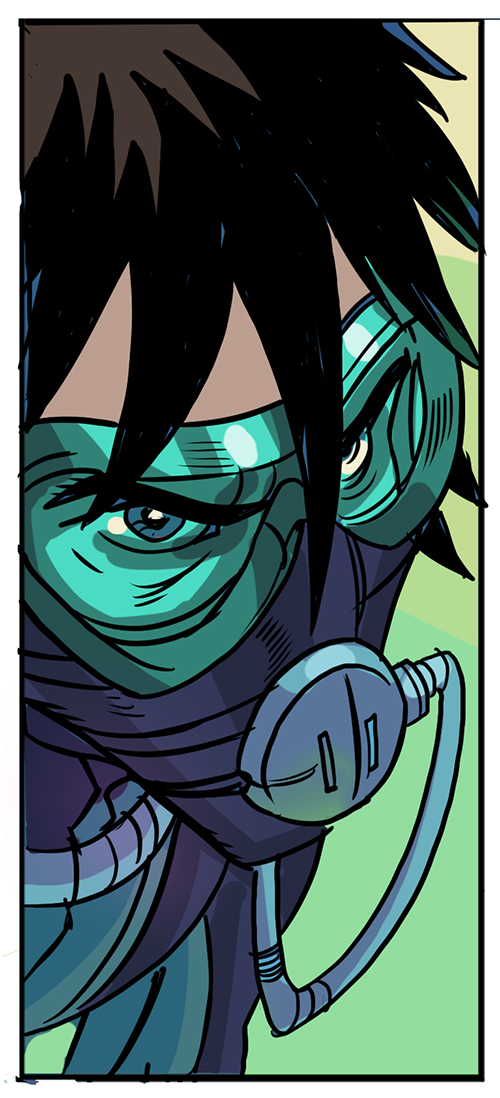
- A close upwardly of grapheme or object
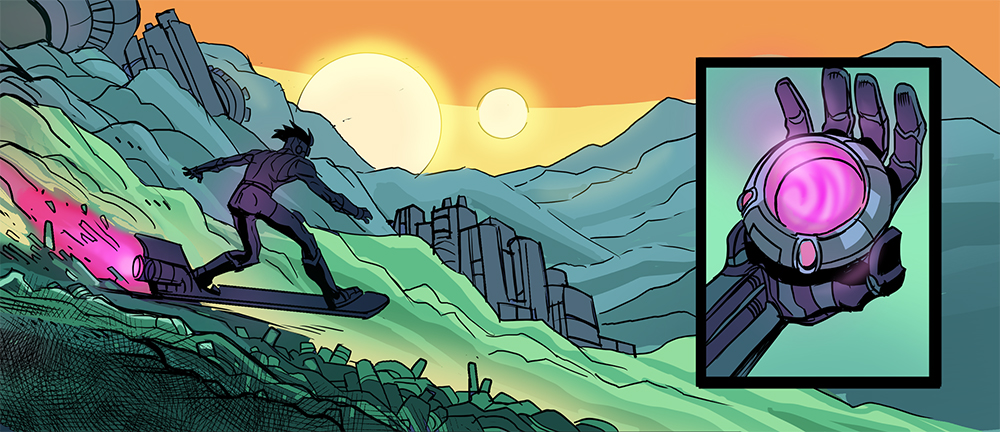
- A distant shot for establishing scenes or showing wide action
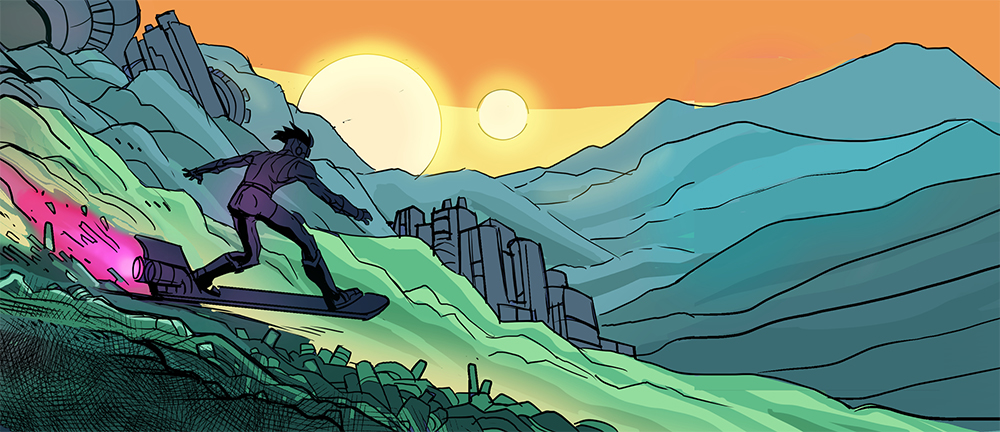
- A silhouette shot gives an opportunity for drama
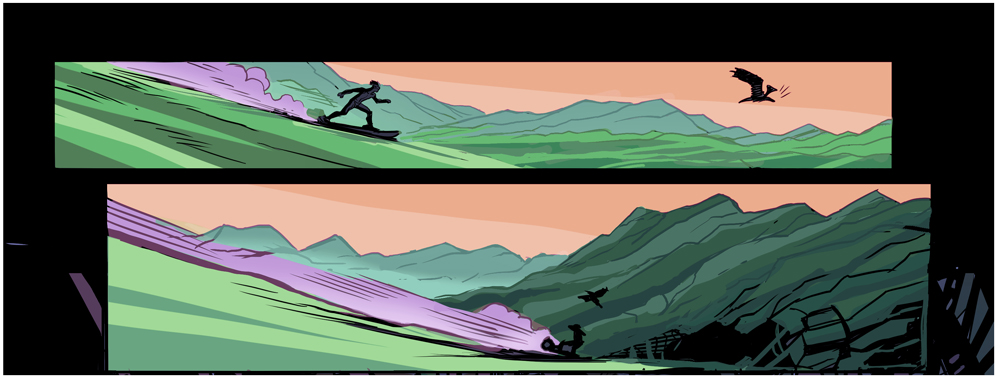
- A single character in backgrounds
- One graphic symbol foreground, 1 grapheme background
- Activity shot
Organizing panels: The gutter
The space between the panels is called the gutter. If each panel is an idea, Its job is to exist the infinite between ideas, to give the reader a moment to absorb the contents of the first panel before connecting that idea with the contents of the next panel. Traditionally a gutter is always the same width, which implies a fairly polish transition from panel to panel with no accent or alteration to the reading. A wider panel border, leaving the reader more fourth dimension and space to rest and think about the story tin can be a nice choice for creating time in-betwixt moments.
Gutter and no gutter examples:
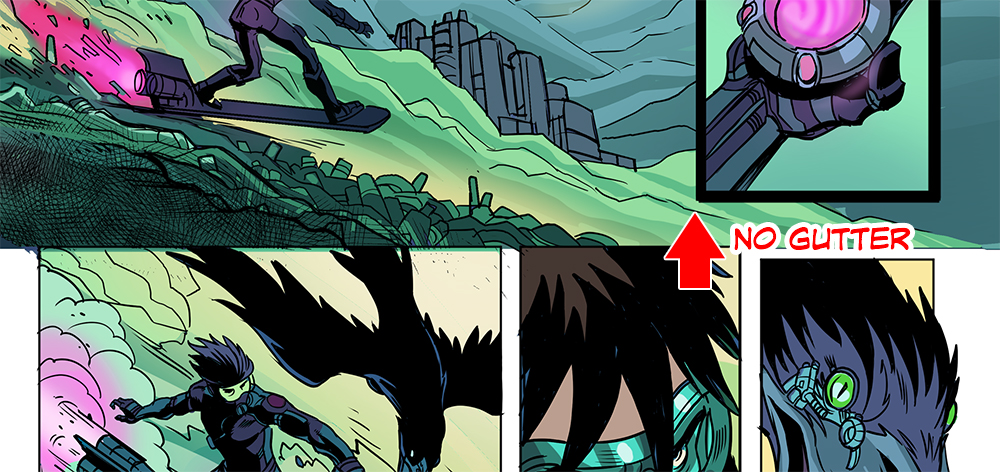
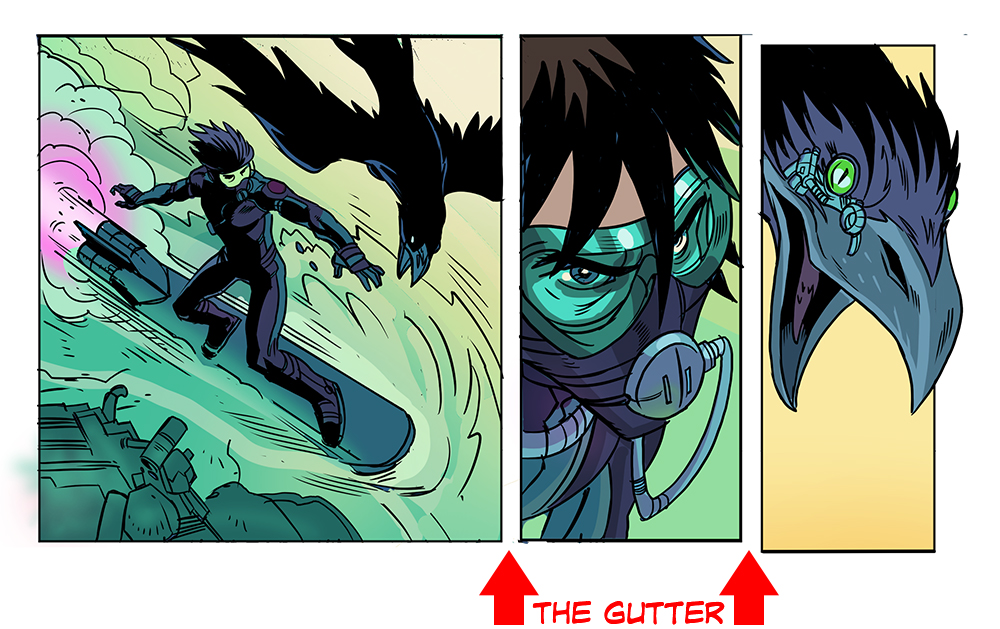
Overlapping panels:
Removing panel borders tends to make the contents of ii panels bleed together either making them confusing to read, or creating a sense that two actions are happening at once. If I am looking to atomic number 82 the reader from 1 motion-picture show to another or give the feeling that one or more than panels are happening either simultaneously or direct after, I will overlap panels. But information technology's a difficult trick because you lot need to make sure that elements of i panel don't bleed into another panel making it difficult to separate the beats of the page.
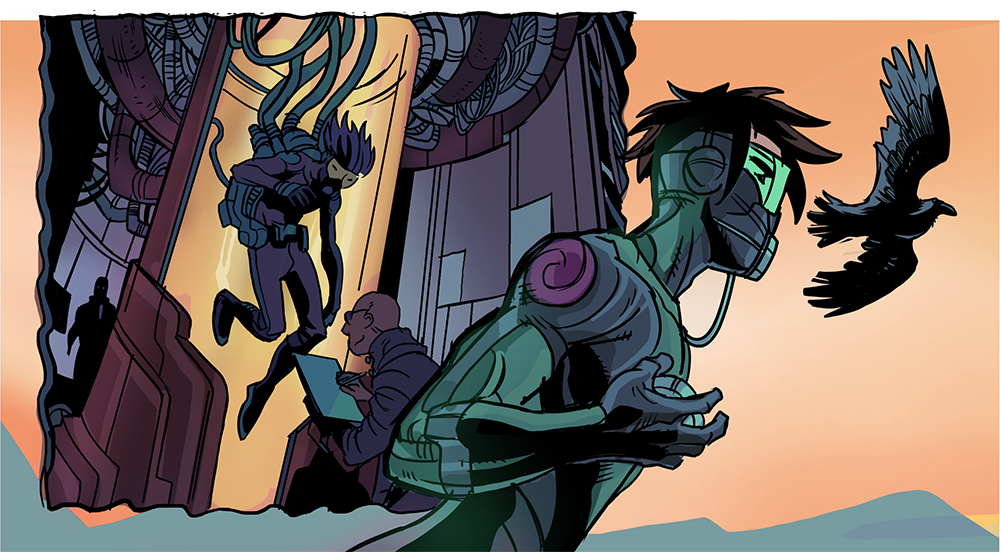
Varying Gutter Width:
Effective gutters usage can increment the realism of a scene.
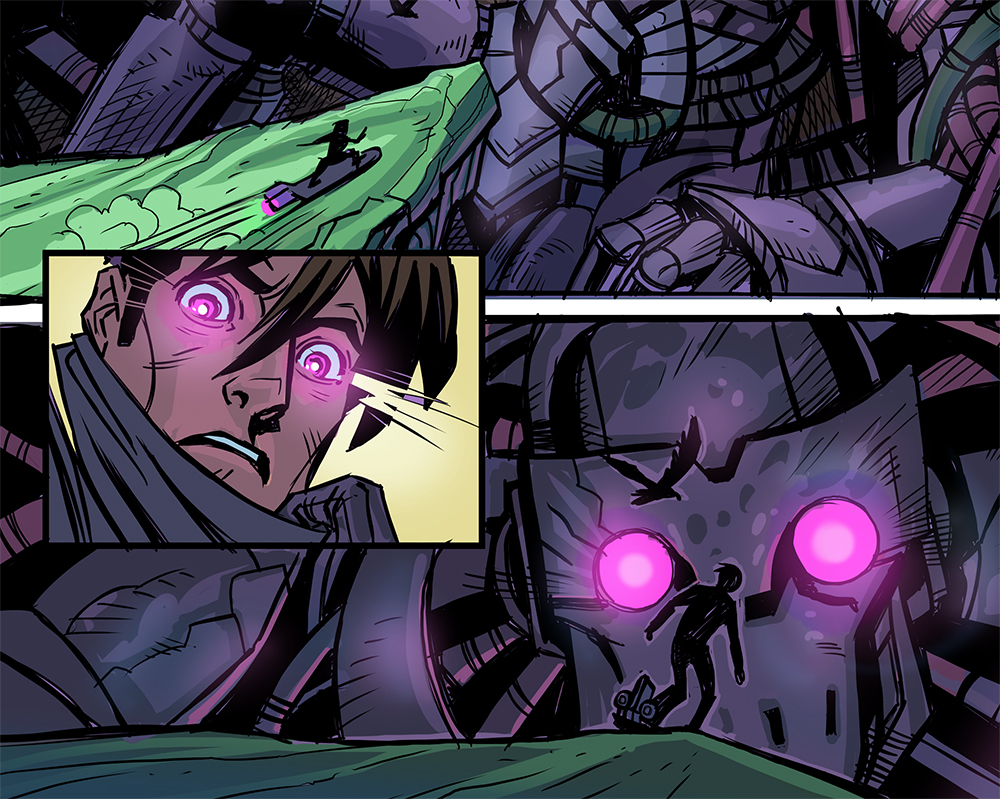
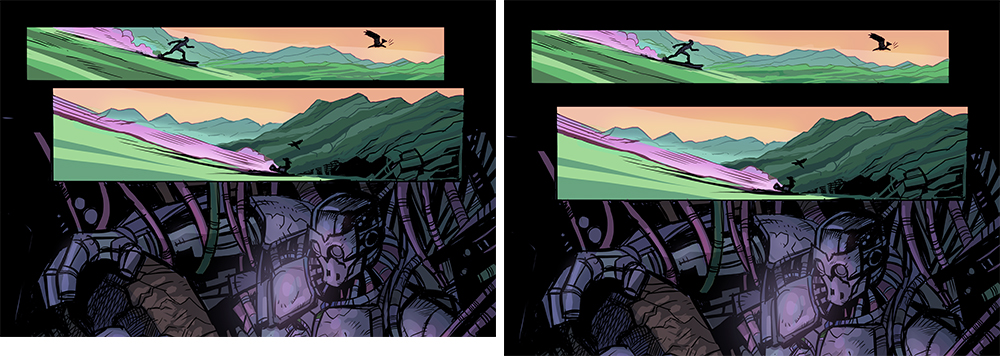
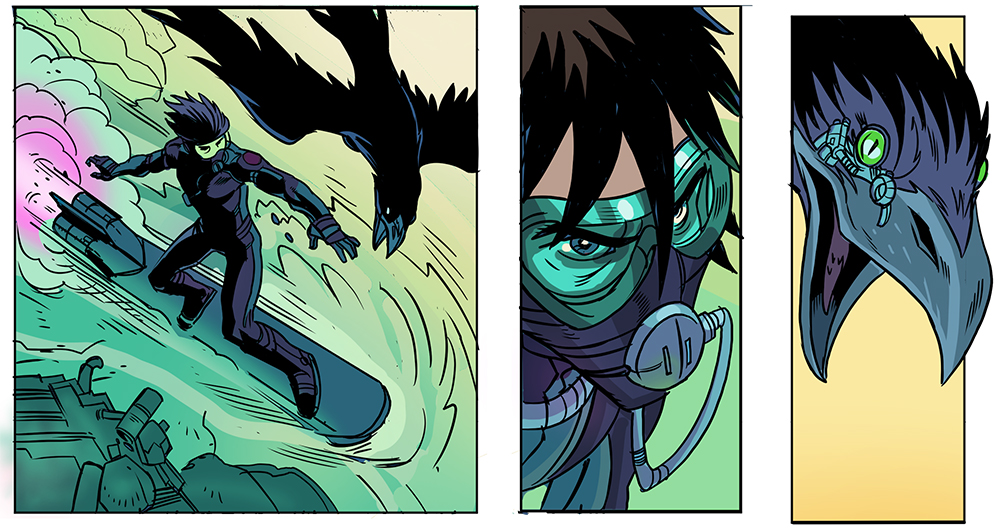
Other means panels tin can be used to tell a story
Panels can be used to tell the story simply through their shape and past the lines creating the panels. Switching scenes can exist done using different style panel borders to permit a reader to understand that we are now in a different identify. Y'all can use dissimilar styles of borders to evidence that characters are in a new world, state of beingness, or even to represent a shift in time equally in a retention or a premonition. With a memory or premonition or a alter of state, you lot tin choose many different styles of lines for panels, possibly wavy lines for a retention, or shocking broken up lines for a premonition, altering the shape of the line will help the reader know we are entering a different type of scene.
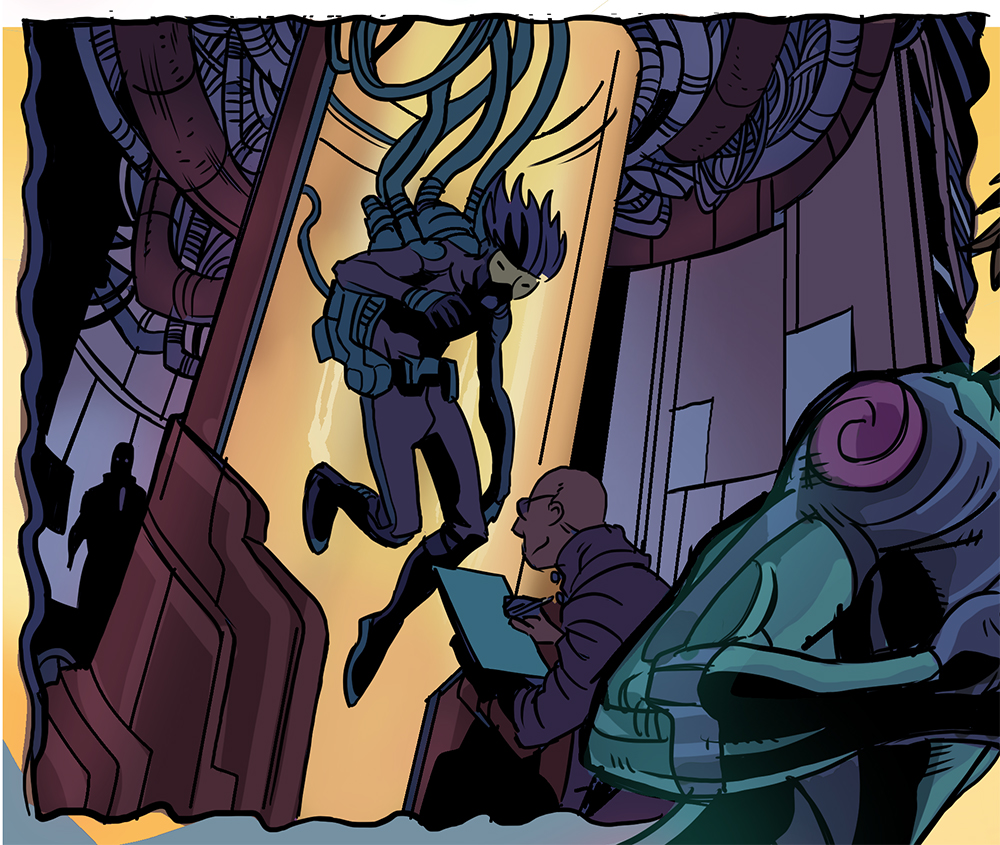
To frame or non to Frame:
Sometimes a powerful effect can be created by dropping out a frame from a page in order to accentuate a specific object or action. This pairs well with a standalone object, or a silhouette. These panels go to the edge of the paper beyond the "safe" area of the panels.
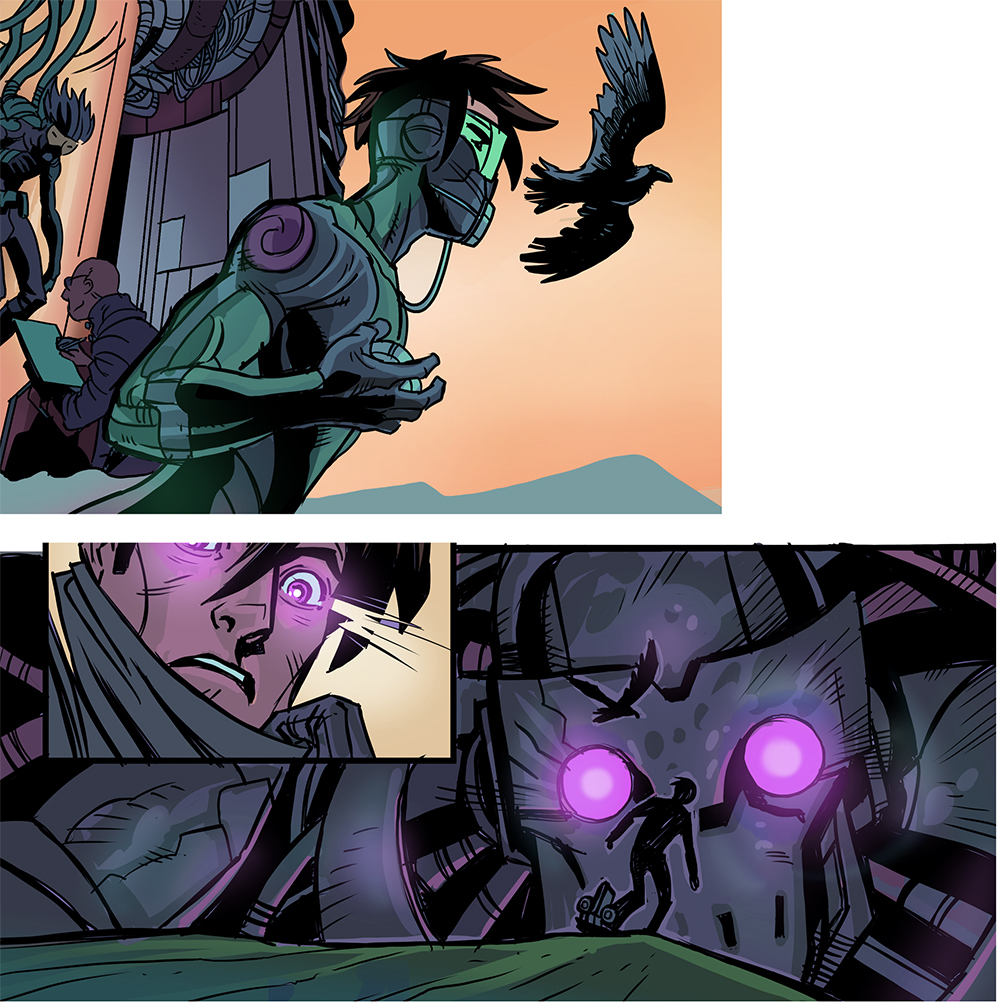
All of these types of panels get into building a strong and well story-told page like this.
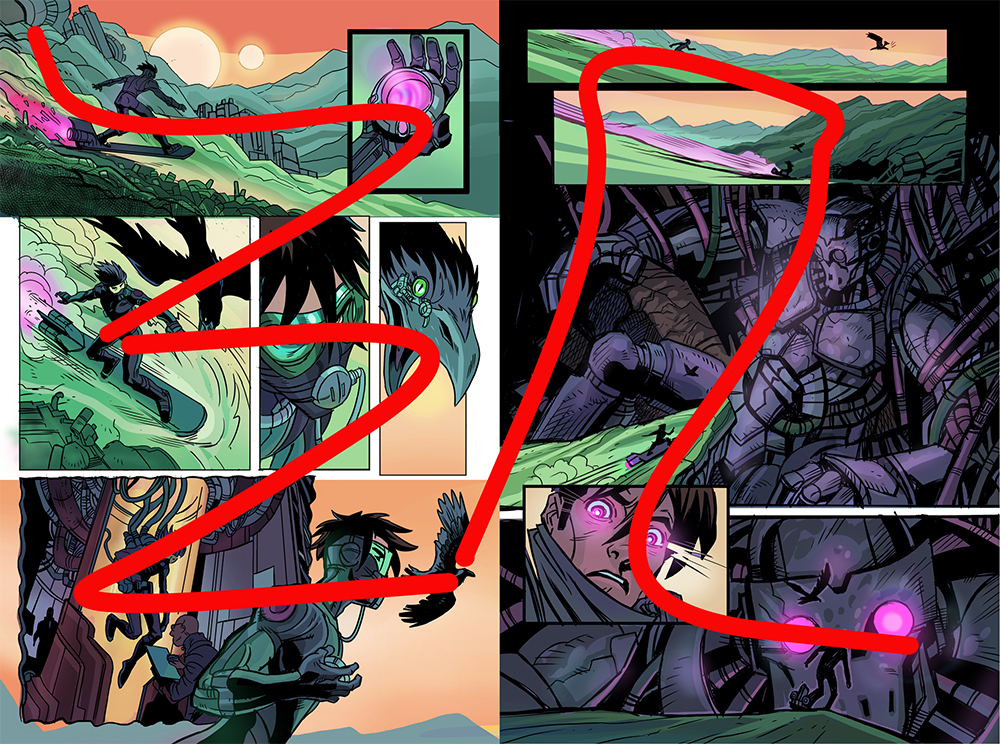
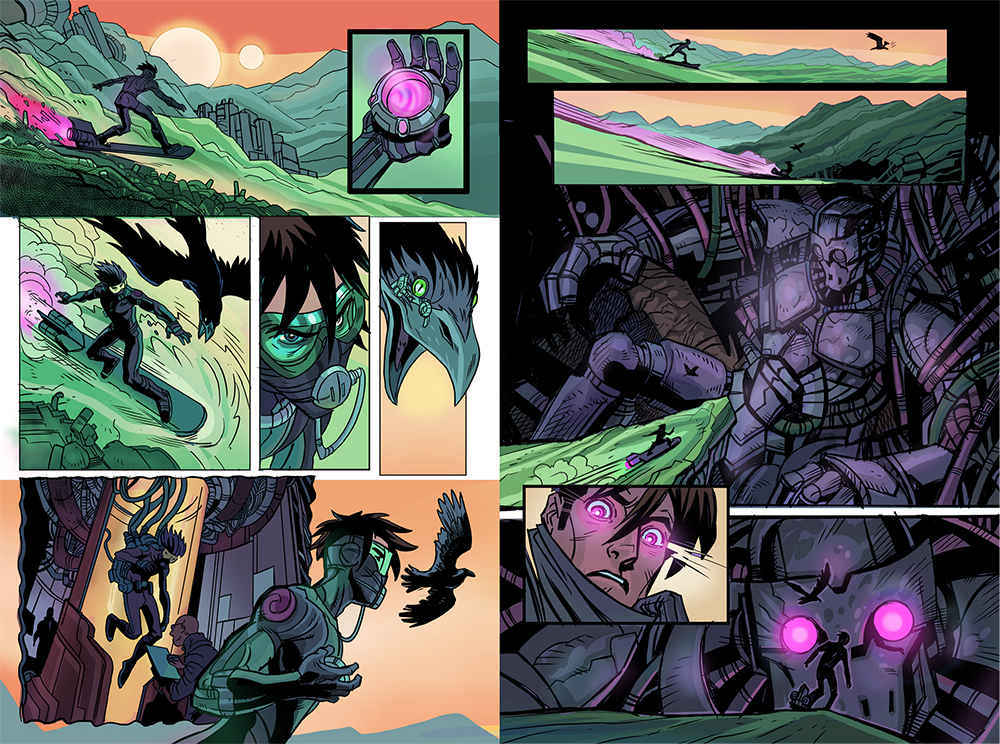
Click to expand paradigm
Finally, these are all just ways of budgeted storytelling. Creating your own sense of pacing and movement between panels volition come up to you as you work and develop your style. Trying all of these different types of panels in your layouts can exist a good way to test run a device before committing to a last page layout.
Get out and tell some great stories!
About the Artist
I'm Steve Ellis, an American Comic artist, and Illustrator. I've created the Werewolf Western series High Moon and the adventure series The But Living Boy and The Only Living Girl. I've also done illustration projects for Marvel, DC, Image, Wizards of the Coast, Fantasy Flight Dark Horse, Blizzard, and many more than. I beloved helping people with their fine art so contact me through my site or Instagram for assistance!
www.steveellisart.com
world wide web.instagram.com/steveellisart/
twitter.com/SteveEllisArt
vosspliteruning1969.blogspot.com
Source: https://www.clipstudio.net/how-to-draw/archives/160963
0 Response to "How to Pre Plan Comic Panels for Instagram Drawings"
Post a Comment